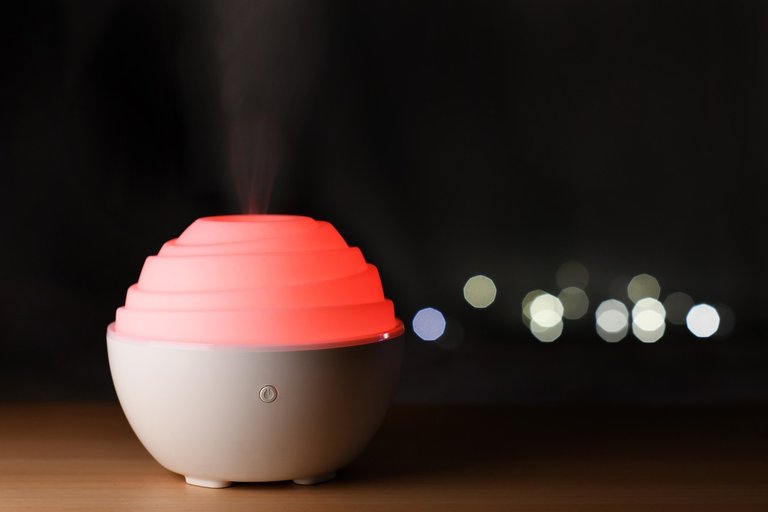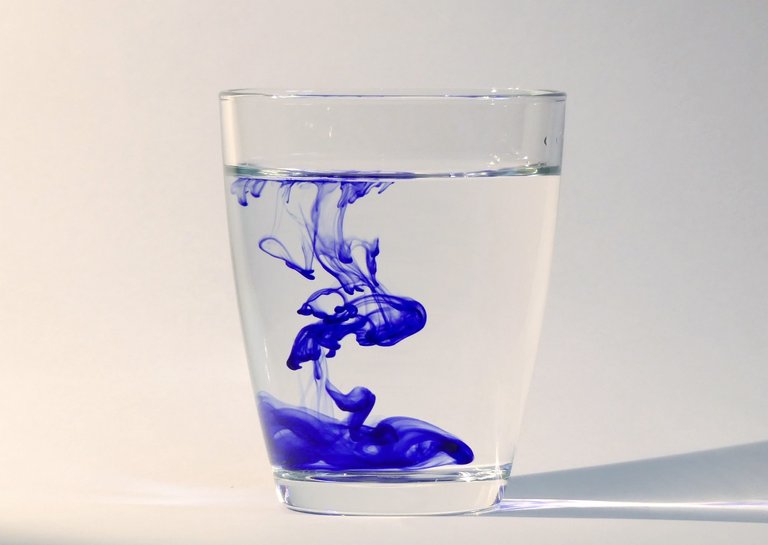Understanding Osmosis and Diffusion: Science Made Simple.
Hello, science enthusiasts! Thank you for your support on my first article here on StemSocial, where I explained Boyle's law in a way that even a kid can grasp. In my second article, I'll be tackling another topic that used to give me a hard time when I first encountered it. But after hours of dedicated research, I finally cracked it. So, whether you're a high school student struggling with this topic or someone who pretended to get it in class, don't worry – I've got your back!

In the world of biology and chemistry, there are two important processes that control how stuff moves: osmosis and diffusion. These processes are super important for life and they impact everything from how cells work to how plants take in water and nutrients. Don't let their fancy names scare you, because in this article, I'll break down osmosis and diffusion in simple words so you can grasp these important ideas.
Diffusion: The Natural Spreading of Molecules
Now, let's talk about diffusion, which is about as natural as it gets. Remember what your science teacher said? It simply meant Diffusion is when molecules move from where there are lots of them to where there are fewer. Imagine you open a bottle of perfume in a room. The smell spreads because tiny perfume molecules move into the air. That's diffusion happening right there!
Let's break down these key concepts even further:
1. High concentration:
Imagine a crowded room where there are a lot of people packed closely together. In the world of molecules, this means there are many of the same type of molecule gathered in one spot. They're kind of like those people in the crowded room.
2. Low concentration:
Now, think of an empty room where there are very few people. In the molecular world, low concentration means there are only a few of those molecules hanging out in a particular area. It's like that quiet, empty room.
3. Movement:
Molecules are always on the move. They're tiny, restless beings that never sit still. They bounce off each other and move around randomly, like people mingling at a party, always trying to find more space.
4. Equilibrium:
Eventually, after all that bouncing and moving, something interesting happens. The molecules start spreading out and mixing evenly throughout the space. It's like if the crowded and empty rooms at that party merged into one big room where everyone is evenly distributed. We call this balanced state "equilibrium."

Diffusion is a universal phenomenon. You can see it happening in everyday life, like when you add sugar to your coffee. At first, the sugar is clumped in one spot, but as you stir, it slowly spreads throughout the liquid. You don't have to keep stirring forever because diffusion takes care of making everything mix evenly. It's the reason why the air you breathe is filled with a mix of gases and how colors blend when you drop food coloring into water.
Osmosis: Water's Sneaky Movement
Alright osmosis, it's your turn, come here let's deal with you.
Osmosis is a bit like diffusion, but it's all about water. In osmosis, water molecules move from a place where there's not much stuff dissolved in the water (we call this "low solute concentration") to a place where there's a whole bunch of stuff mixed in the water (that's "high solute concentration"). And they do this through a special kind of barrier called a semi-permeable membrane.
But what's this "solute" thing we're talking about? Think about making a glass of lemonade. The lemonade mix, that powdery stuff you put in, is the solute. The water is like the main part of the lemonade. So, when we say "low solute concentration," it's like saying there isn't much lemonade mix in the water, and "high solute concentration" means there's a whole lot of that mix in there. It's just a fancy way of talking about how much stuff is in the water.
So, Here's how osmosis works:
1. Semi-permeable membrane:
Think of this like a filter that's picky about what it lets through. It allows tiny water molecules to pass through but blocks larger ones. A good example of a semi-permeable membrane is the kind you find in cell walls. It's like a gatekeeper that only lets small water molecules come in and out.
2. High solute concentration:
Imagine you're inside a cell, and it's packed with stuff dissolved in water (that's the solute). There's a lot of stuff crammed in there, making it "high solute concentration" inside the cell.
3. Low solute concentration:
Now, if you step outside the cell, you'll find that there's not as much stuff dissolved in the water out there. So, outside the cell, it's "low solute concentration."
4. Movement:
Water molecules wants to make things even on both sides of the cell membrane. So, they move from where there are fewer solute particles (outside the cell) to where there are more (inside the cell), trying to even out the playing field.
5. Equilibrium:
When enough water has moved inside the cell to balance things out, osmosis takes a breather. It's like saying, "Hey, everything's level now, so we're good." That's when osmosis stops, and things are in harmony.

Osmosis plays a crucial role in living organisms. It's how plants absorb water from the soil, how our kidneys filter waste from our blood, and even how cells maintain their shape and function. In the case of plant roots, they have special cells that allow water to enter through osmosis, ensuring the plant gets the hydration it needs.
Examples in Daily Life
Let's explore some everyday examples to solidify our understanding of osmosis and diffusion.
Red Blood Cells and Saline Solution: When you receive a saline (saltwater) IV, the saline solution outside your red blood cells has a higher solute concentration. This causes water to leave your red blood cells through osmosis, which can help rehydrate you.
Cooking Aroma: Ever notice how the smell of cooking food wafts through your home? That's diffusion in action. The delicious aromas spread from the kitchen (high concentration) to other parts of your house (low concentration).
Tea Bag in Hot Water: When you place a tea bag in hot water, the tea's flavors diffuse throughout the liquid, creating your favorite brew.
Fruit Ripening: Fruits emit ethylene gas, which helps them ripen. The gas diffuses from the fruit (high concentration) to the surrounding air (low concentration), speeding up the ripening process.
Conclusion
In a nutshell, Diffusion is just molecules spreading from crowded places to less crowded ones, while osmosis is like a fancy version of that, but with water through special barriers.
Knowing about these processes helps us understand how cells work, how plants take in water, and even why your home smells delicious when mum is cooking. So, if you ever come across a big, scary science word, remember that science is often about things we see every day, and simplifying those ideas can make them much easier to understand.
Thank you for reading to the end, I really hope you get it now. Hit me up in the comment section if you have any confusion, I'd be happy to clarify.
Thanks for your contribution to the STEMsocial community. Feel free to join us on discord to get to know the rest of us!
Please consider delegating to the @stemsocial account (85% of the curation rewards are returned).
Thanks for including @stemsocial as a beneficiary, which gives you stronger support.